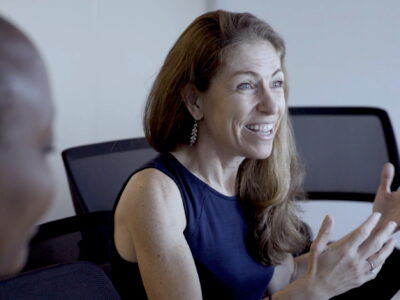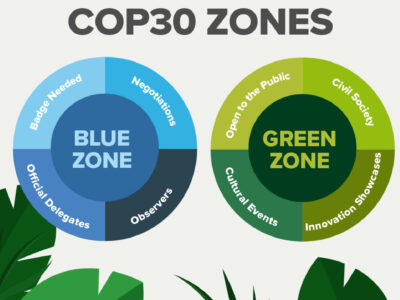
Two months after the UN’s landmark conference on sustainable development in Rio de Janeiro, has anything changed?
For many, the official document that was a principal outcome of “Rio+20” is an extreme disappointment – little more than a reaffirmation of the problems and desires stated at the first Earth Summit in Rio 20 years ago, with no firm commitments, no tangible goals and no timetables.
Its defenders note that the document, titled “The Future We Want,” sets the stage for further deliberations on a set of sustainable development goals, and that it makes important statements about protecting oceans, providing people access to energy, and establishing human rights to food, safe drinking water and sanitation. In the midst of financial crisis, they say, it’s too much to expect 190 nations with often diverging economic interests to agree on what to do – but at least, those nations are still talking.
And indeed, the UN secretary general has appointed a special panel to begin the debate over sustainable development goals, and launched a new project, the Sustainable Development Solutions Network, to focus research worldwide on solutions to some of the daunting social, environmental and economic problems we face. Earth Institute Director Jeffrey Sachs will lead that effort.
The real bright spots in Rio, however, had more to with what happened outside the formal UN conference June 20-22, in meetings of ordinary citizens, corporations, non-governmental organizations and local government groups. There, the sense of urgency about the world’s social and environmental problems resolved into action, including a long list of voluntary commitments.
One of those bright spots was lit by cities; hundreds of representatives came to Rio for a series of “side events” focused on the problems pressing in on the burgeoning urban population. For the mayors of the world, there is no time to waste: They are already working on solutions and came out of Rio with some concrete commitments for the future.

“The cities are really where the action is,” said Cynthia Rosenzweig, a senior research scientist at the Earth Institute and the NASA Goddard Institute for Space Studies. Rosenzweig is co-director of the Urban Climate Change Research Network, a consortium of more than 400 researchers and practitioners who focus on climate change adaptation and mitigation from an urban perspective. She attended a series of events in Rio, including the Rio+20 Mayors Summit, where she talked about the findings of the research network’s First Assessment Report on Climate Change and Cities, published in 2011. Cities, Rosenzweig said, are emerging as the “first responders” on climate change and sustainable development.
That’s in part because cities have to: More than half the world’s population now lives in urban areas; 20 cities have populations over 10 million, and the proportion of urban population is growing. Mayors of many of the world’s metropolises are directly confronting pressing problems in transportation, energy, waste treatment, housing and basic services. They also are often on the front lines of issues related to climate change, including sea level rise and increasing risks from extreme weather events.
And cities are already doing something about it. There was plenty of evidence on display at the Rio conference. At the Mayors Summit, co-sponsored by C40, one of several groups representing cities, municipal officials pledged to reduce the greenhouse gas emissions that contribute to global warming by a billion tons by 2030. That’s the equivalent of the combined annual output of emissions of Mexico and Canada (total human emissions are estimated at 30 billion tons a year).

With thousands of climate-related actions underway, the cities already are on track to cut emissions by 248 million tons by 2020. C40, formed in 2005, now includes members from 59 cities committed to fighting climate change and reducing risks from extreme climate-related events, such as flooding and landslides.
The group launched a new learning network so cities can share information on how they’re managing solid waste and reducing emissions of methane, a key contributor to global warming. The network will get support from the U.S. State Department’s Climate and Clean Air Initiative and the World Bank.
In partnership with the Joint Initiative on Urban Sustainability, a U.S.-Brazilian collaboration, C40 will set up a library of best practices on its website so cities can share strategies for sustainable development, financing and climate reduction.
For Rosenzweig, the official outcome document of Rio+20 “shows that it’s very hard to get 190 sovereign nations to agree on anything that’s innovative or really forward looking. The document is fine, but what it showed so clearly is that the contrast with the cities is very striking. The countries are expressing concern about global warming, and the cities are standing up and saying this is what we’re doing.”
For instance, Rio de Janeiro has undertaken an ambitious renovation of its port area, encompassing residential, commercial and industrial spaces, interwoven with public services such as schools and health clinics, green spaces, a public transportation network and cultural attractions. The goal of the Porto Maravilha project is to attract new residents, foster economic growth, improve the quality of public spaces and create “a better social balance and sustainable urban environment.” Buildings will be required to meet certain standards, such as minimum spacing requirements, use of solar energy, water conservation, green roofs, and recycled and sustainable building materials.
“It’s addressing as well the potential for climate change,” Rosenzweig said. “They are taking all of the elements together to create a sustainable area of the city.”
New York City is working on PlaNYC, a program to expand green spaces, promote alternative transportation, better manage storm-water runoff, and revise city building codes to encourage energy efficiency and the development of alternative energy.
Mexico City has programs to enhance public transportation and reduce methane emissions from landfills. Tokyo has adopted a CO2 cap-and-trade system for buildings. In South Korea, the city of Daegu is reducing energy consumption by promoting the use of rooftop photovoltaic solar systems, including building model “solar villages,” making public buildings more efficient and requiring new buildings to meet high efficiency standards.

Another municipal group, ICLEI – Local Governments for Sustainability, has an ongoing program, the carbon Cities Climate Registry, through which more than 160 local governments from 21 countries report climate information and make commitments to reduce greenhouse gas emissions. Those commitments grew out of an earlier mayors summit in Mexico City in 2010. ICLEI organized a multi-day “Global Town Hall” on sustainability at Rio.
Rosenzweig’s main mission in Rio was to listen: She is gathering input for the second edition of the assessment report on climate change and cities. (The first report was produced by the Earth Institute, Milano at the New School, The Institute for Sustainable Cities at Hunter-CUNY and the Massachusetts Institute of Technology.)
The update is scheduled to come out in 2015, timed to follow the next assessment report of the UN’s Intergovernmental Panel on Climate Change, due in 2014. The Urban Climate Change Research Network, which is producing the cities and climate reports, co-sponsored a special session of city officials and urban researchers in Rio.
“Our session was a scoping session for what are the emerging research topics and knowledge topics that the city decision-makers need to really know … to actually fulfill their role as the leaders of sustainable development and the first responders to climate change,” she said.
One example: urban “CO2 domes” – the high levels of carbon dioxide that concentrate above cities because of their intense transportation and industrial activity. By learning how to measure those concentrations of CO2, researchers can help cities monitor their progress in reducing emissions.

Other topics that are emerging as related to climate change, according to Rosenzweig:
- The interactions between the urban heat island effect, air quality and climate change.
- Urban ecology, agriculture and food systems.
- Better infrastructure for “informal” settlements – for instance, the favelas packed onto hillsides around Rio, where residents are particularly vulnerable to extreme weather events and landslides.
- Disasters, such as flooding, drought, landslides and sea level rise.
- Governance and finance: How cities, just one of many layers of government, can pay for the infrastructure they need to be more resilient.
- Energy, water, transportation and waste.
Rosenzweig said urban planning and design also are key areas for research: How cities can incorporate more sustainable and resilient structures and services. “We need to have a new … flowering of urban planning and urban design that takes technology and equity issues and climate change into account,” she said.
Like many, Rosenzweig had a subdued reaction to the final outcome document produced in Rio.
“There was nothing new. On the good side of it … I think having the sustainable development goals is really important,” she said, noting that urbanization is a key element of those goals. She was more enthused that cities were recognized not just for their problems, but for what they can do.
“It’s a significant recognition of the role that cities will play,” she said. “It’s here that the critical pathways will be redesigned. It’s going to happen in cities because it has to.”



